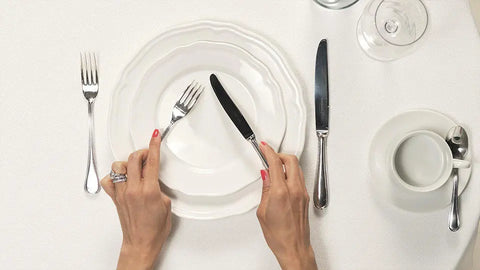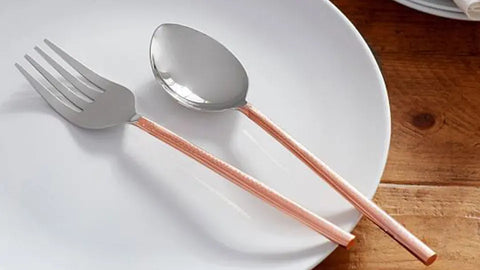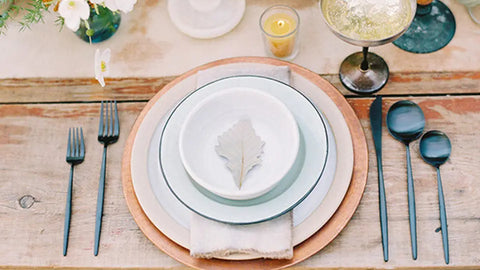Serving food is much more than just putting out the food on a dish. It is a culinary art. However, you don't need to take a course to learn that. You can use your silverware in the right way to make your food more presentable. Here are some 'How To Dos' to help you in that makinga minimal effort.
How do you serve silverware at the table?
It is essential to understand that serving silverware is crucial for your dinner setting. The excellent way to do that is by setting the utensils of your best silverware at the far end of the buffet, away from the plates, so that your guests can grab them last rather than juggling them while serving themselves. Arrange them in tidy rows or fan them out in arcs across the table's corner.
How do you keep cutlery organized?
Following the silverware setting, the napkin is usually placed on the charger or an empty plate at the meal's start. However, it can alternatively be placed beneath the cutlery. The fork should be on the left, while the spoon and knife should be on the right of the cutlery.
When dining out, where do you put your silverware?
Begin from the outside and work your way in. In general, you should start with the utensil that is farthest from the plate and work your way inward. The salad fork goes on the left, followed by the meal fork beside the plate.
What is the best way to serve silverware?
It is crucial to have knives and forks correctly placed, even for the best silverware. Knives and spoons should go on the right side of the dish, whereas forks should go on the left. Knives should always be pointing inwards toward the plate. You don't need a spoon if you're not serving soup. The bottoms of the silverware should always be lined up.
On a host table, how do you display silverware?
There are a lot of best silverware brands that can help your table look exquisite. To put an impression on your guests, you can tie a ribbon around clean, empty coffee cans that have been covered with fabric or self-adhesive paper for a simple, inexpensive solution to hold cutlery. Place all handles down so guests don't have to guess what's inside, or place them up with a note on the front of the container indicating what's within.
How do you arrange your silverware?
Placement of Silverware:
1. Arrange the utensils in the order they will be used.
2. Forks should be positioned on the plate's left side.
3. Spoons are put on the right side of the plate, except the dessert spoon, which is positioned above the dinner plate, similar to the dessert fork.
How should silverware be placed in a place setting?
The first and most basic rule to remember is that utensils should be placed in the order of use, starting from the outside in. With a few exceptions, the second rule is: Knives and spoons go to the right of the plate, whereas forks go to the left.
Is it necessary to set your fork down between bites?
There is a perfect way to hold your knife and fork. When using the knife to scoop food into the fork, make sure the fork always faces the plate. It's also polite to set down cutlery between bites, so make sure your knife and fork are resting on your plate.
How do you set the table with cutlery?
Put your cutlery on the table in the sequence in which it will be used, beginning on the outside
and working inwards with each meal. Knives should be positioned to the right of the plate, blade edges facing inwards, and forks should be put to the left of the plate. To the right of the knife, soup spoons should be placed.
Which side of the cutlery does the silverware go on in a formal setting?
Spoons, forks, and knives for a formal table should be placed on the left, while knives and spoons should be put on the right.
In what order should silverware be placed in the drawer?
Most experts agreed that the drawers should be organized similarly to a dining table, with your knives and spoons on the right, your forks on the left, and a small compartment for teaspoons running horizontally across the tray's bottom.
How do you keep food safe when it's being served at a buffet?
When possible, use lids or covers on each food item, and place sneeze guards over the buffet area to prevent pathogens from sneezing or saliva from reaching the food. Make sure that the handles of serving utensils of your unique silverware do not contact the food, as bacteria can spread from a customer's palm to the utensil and then onto the food.



